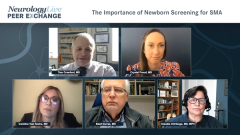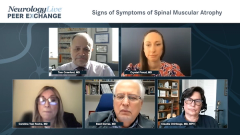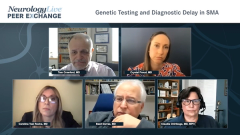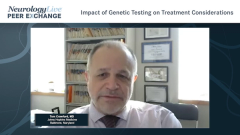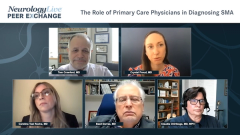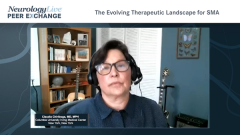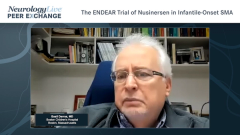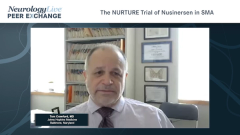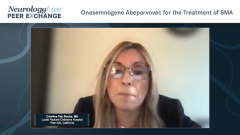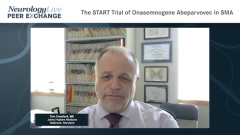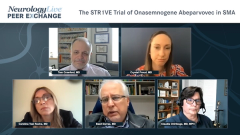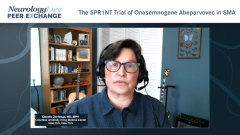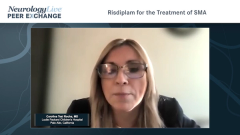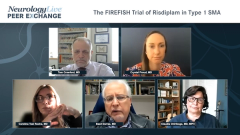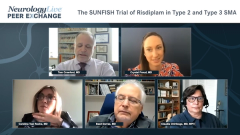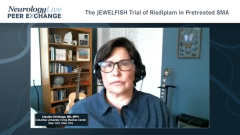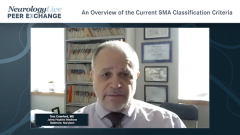
Onasemnogene Abeparvovec for the Treatment of SMA
Key opinion leader in neurology Carolina Tesi Rocha, MD provides an overview of onasemnogene abeparvovec by discussing its mechanism of action, safety, and efficacy for patients with SMA.
Episodes in this series

Crystal Proud, MD: Let’s transition to talk a little about onasemnogene, which is FDA approved for the treatment of children under 2 years old in the United States. Carolina, perhaps you can talk to us a little about the mechanism of action and indication.
Carolina Tesi Rocha, MD: Yes, sure. Onasemnogene, as you know, is a gene replacement therapy. In a way, it is a different mechanism working to make the patients better. It is given once as opposed to what we have been talking about with nusinersen. After a loading dose, it is given every 4 months for life until you decide to change therapies. It is designed to provide sustained SMN expression in the motor neurons. It uses a nonreplicating adeno-associated virus. These viruses are not detrimental to humans. They use the capsid of this AAV9 [adeno-associated virus] to deliver a functional copy of the SMN gene to the motor neuron cells. How does this work? This coding region of the recombinant virus forms an intramolecular double-stranded DNA, which does not—to the extent of our knowledge—integrate into the patient’s own DNA.
This self-complementary feature of the vector with cytomegalovirus encases a promoter that allows the rapid and sustained production of these SMN. Because the vector can cross the blood-brain barrier, it can easily get to the motor neurons in the central nervous system, even after intravenous injection. However, an important point to consider in this regard is that the SMN protein is equally expressed in different tissues. Potentially, this systemic delivery can give an advantage and result in the increase in SMN expression in other organs of the body. Here in the United States, I believe in May 2019, the FDA approved this second agent for the treatment of patients with spinal muscular atrophy [SMA] that have these biallelic mutations on the survival motor neuron, 1 gene that was under 2 years of age. In Europe it is different, as Claudia was mentioning before; it is based on weight and goes up to 21 kg. This onetime intravenous administration results in this expression of the SMN protein in a child’s motor neurons and improves patients’ movement, function, and survival. We are going to go into more detail on that later.
In the same way, I know we cannot compare different drugs, but the resulting improvements of motor function and survival of children with SMA was also seen. How do we dose the patient? This is based on the weight of the patient and the vector genome per kilogram. Then again, we have been using the medication for a while, not only in the context of clinical trials; it is now a commercially available product. It is a safe medication, but in the first studies, the pilot ones, there was an identified immune reaction with presence of transaminitis in some patients. That lead to treating patients with corticosteroids as well. Before the infusion—24 hours prior to that—we treat the patients with a high dose of prednisone. It varies in different places—from 1 to 2 mg, as we at Lucile Packard Children’s Hospital do, per kilogram—in these infants, and then we keep the steroids at least for a month. We continue to monitor safety labs and other parameters to decide whether, after a month, we start intervening or we keep that longer. The other adverse effects that have been reported, and I have seen some patients developing, include transient thrombocytopenia. There are other considerations, such as potential immunoreactivity and more liver damage. It is important that, when you do these screenings prior to treatment, you identify whether the patient might have a preexisting liver impairment. That will put them at a higher risk of developing serious liver injury. This is another great compound that is available for the treatment of patients under 2 years of age.
Crystal Proud, MD: Absolutely. I think that it was Claudia earlier who commented on centers of excellence pursuing evaluation, intervention, and management. In particular with onasemnogene [abeparvovec], the capacity to be able to counsel and monitor our patients and to be able to intervene in the case of adverse effects, is critical in particular with this therapy.
Thank you for watching this Neurology Live® Peer Exchange. If you enjoyed the content, please subscribe to our e-newsletters to receive upcoming Peer Exchange and other great content right in your in-box.
Transcript Edited for Clarity
Newsletter
Keep your finger on the pulse of neurology—subscribe to NeurologyLive for expert interviews, new data, and breakthrough treatment updates.

